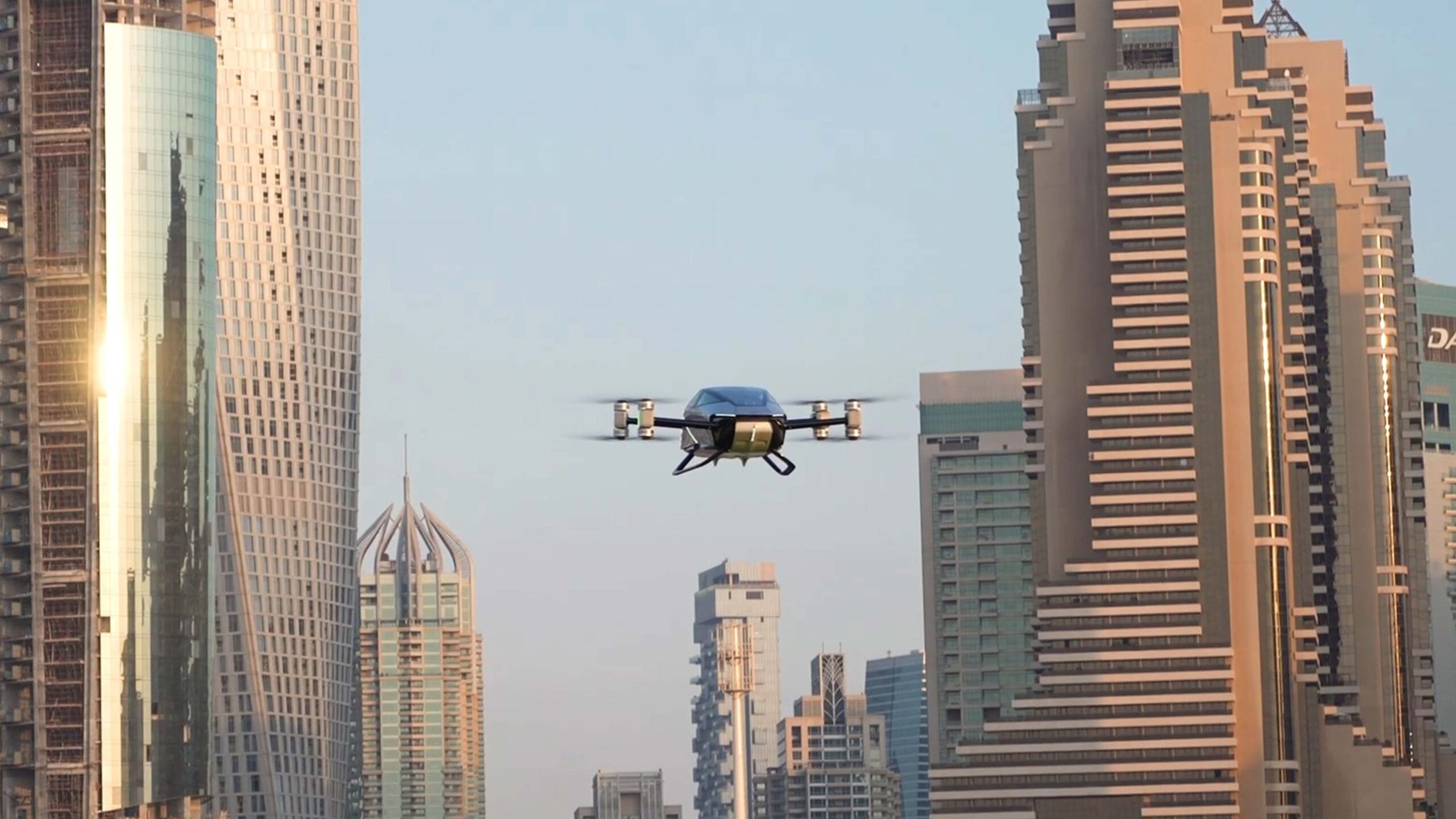China is harnessing its electric vehicle (EV) technology prowess to carve out a significant niche in the emerging global commercial flying car market. There are dozens of companies globally, from China to the US and Europe, developing electric vertical take-off and landing (eVTOL) aircrafts, but China is positioning itself at the forefront of this revolutionary transport sector. Several Chinese companies have models in testing and are waiting for the regulatory go.
XPeng AeroHT already has a dual-mode eVTOL vehicle in type certification testing with the Civil Aviation Administration of China, a requirement for commercial operation. This particular model allows for flying and driving on the ground.
The company began developing flying cars about a decade ago. Xpeng co-founder and CEO He Xiaopeng recently emphasised at an auto show in China that flying cars would enrich people’s lives as they avoid heavy traffic and thus are an alternative to public transport.
“The low-altitude air travel business has big potential for growth,” He said. “In China, in particular, its business outlook is bright amid the development of the future of mobility.”
XPeng AeroHT plans to begin mass production in 2025.
Competitor EHang is already a step further. Its two-seater EH216-S, which can fly for 25 minutes on a single charge, has the type certification and was authorised to mass produce in March.
Both companies are eyeing partnerships in the tourism sector. According to EHang, they already have inquiries from the Middle East and Southeast Asia for the $410,000 eVTOL.
The potential of the flying car market is enormous. A BluePaper by Morgan Stanley Research projects a total addressable market of $1.5 tn for autonomous aircraft by 2040. “Urban air mobility represents opportunities within infrastructure, fleet management, software, hardware, and content, much like autonomous vehicles,” says Adam Jonas, Head of Global Auto and Shared Mobility Research at Morgan Stanley Research.
According to a report by China Merchants Securities last month, China accounts for 50% of the world’s total eVTOL models. In comparison, the US stands at 18% and Germany at 8%
Hurdles for the flying car market
However, there are certain hurdles. Ensuring safety is crucial. New regulations are needed for airspace operation and the corresponding infrastructure, such as landing sites and air traffic control systems.
China, however, is supporting the flying car sector. Last year, the government announced a “green aviation” development plan, including for eVTOL, as part of an official strategy to support a “low altitude economy.”
Technology-hub Shenzhen in the Greater Bay Area declared to build a “city in the sky” and already has China’s first regulations over the low-altitude economy in place.
The region in the south of China is building a grid of over 600 landing/take-off stations for low-altitude aircrafts. Earlier this year, Shenzhen was the centre for the world’s first cross-sea and intercity eVTOL flight. Chinese developer AutoFlight’s Prosperity eVTOL aircraft flew from the city, across the Pearl River Delta to Zhuhai, Macau and back. The trip that is usually three hours by car took the flying car only 20 minutes.
Furthermore, the Chinese government designated Guangzhou, the capital of Guangdong province, where Shenzhen is also located, as a development base for the flying car industry. Guangzhou’s Nansha district shall be “a carrier for bold exploration and early breakthroughs” in the sector, according to the National Development and Reform Commission (NDRC).
“We expect to generate pioneering experiences that can usher in new developments in key reform areas nationwide,” NDRC’s deputy secretary general, Xiao Weiming, said.










 Australia
Australia China
China India
India Indonesia
Indonesia Japan
Japan Malaysia
Malaysia Philippines
Philippines Singapore
Singapore South Korea
South Korea Taiwan
Taiwan Thailand
Thailand Vietnam
Vietnam
 Germany
Germany USA
USA Switzerland
Switzerland Singapore
Singapore
 United Kingdom
United Kingdom







